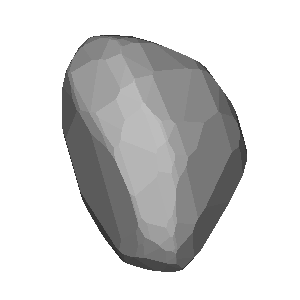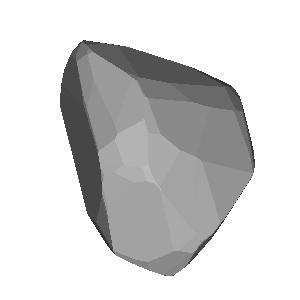2008-02-03 / TYC 2989-01266-1 / (595) Polyxena
| # | OBS | Observer | Occ | Meth. | Instr. | CC | TSRC | UT1 | UT2 | UT3 | UT4 | UT2E | UT3E | Dur. | Chrd |
|---|---|---|---|---|---|---|---|---|---|---|---|---|---|---|---|
| 1 | show | Herbert Raab | O+ | VID | M200 | AT | GPS++ | 18:56:40 | 18:58:49.92 | 18:58:55.32 | 19:00:40 | 0.12 | 0.12 | 5.40 | 77.8 |
| 2 | show | Gerhard Dangl | O+ | VID | M254 | AT | GPS++ | 18:55:04 | 18:58:44.57 | 18:58:49.05 | 19:02:02 | 0.08 | 0.08 | 4.48 | 64.5 |
| 3 | show | Michael Parl | O- | VID | M203 | DE | 18:53:00 | 19:03:00 | |||||||
| 4 | show | Harald Marx | O- | VIS | M350 | DE | 18:53:40 | 19:04:43 | |||||||
| 5 | show | Tomas Janik | O? | VIS | M200 | CZ | RAD++ | 18:57:59 | 18:58:31.97 | 18:58:33.64 | 19:00:49 | 0.2 | 0.5 | 1.67 | 24.0 |
5 observations found in db: euraster
Available (probably) matching predictions (click on the link to switch):| JPL#104 : ccc1df12-015c-41fc-bf1a-3874563a47eb [db: observed] |
Using prediction ccc1df12-015c-41fc-bf1a-3874563a47eb for map and profile fit
| Ellipse and circular profile fits to the timings (chords) |
|---|
|
|
Auto-Fit Result: Ellipse profile fit was not successful. Trying circular fit. Circular diameter = 301 km From 3 chords (VID,VIS) You can enter space separated chord numbers (example: 11 4 8) or a method like VIS to ignore all visual timings, or a time source like RAD and NTP (but not GPS). If the plot disappears, then there are less than 2 chords left (too much ignored, go back with browser). Check SiMDA for size and mass data. Check Johnston Archive for satellites. |
Sky projection (artificial light) for occ. time: 2008-02-03, 18:57 UT (JD = 2454500.290)
| DAMIT | Q | P (h) | λ, β | JD0 | JD-JD0 | φ0 | Version | Modified | Vol-equiv D | Cmnt |
|---|---|---|---|---|---|---|---|---|---|---|
| # 228 | None | 11.794 | 42°, 8° | 2.449187e6 | 5313.3 | 0.0° | preliminary model, agrees well with occultation data http://www.asteroidoccultation.com/observations/Results/Data2015/20150415_PolyxenaProfileDAMIT228.gif | 2015-08-25 | not scaled | 2008-09-16 |
| # 229 | None | 11.794 | 222°, -4° | 2.449187e6 | 5313.3 | 0.0° | preliminary model, probably wrong pole solution, does not agree with occultation data http://www.asteroidoccultation.com/observations/Results/ | 2015-08-25 | not scaled | 2008-09-16 |


Image size: 300px. Transparent image background for copy & paste
| Map with groundtrack and observer stations |
|---|
| Event Details |
|---|
Occultation UUID [and DB] : ccc1df12-015c-41fc-bf1a-3874563a47eb [observed] Occultation Date + Time : 2008-02-03 at 18:54:11 UT +/- 0.03 min [1] Object Designation : (595) Polyxena Orbit Class : MBA Star Designation : GDR3 0913063665779350144 Star Coordinates (ICRF) : RA = 08 53 19.9994, DE = +42 47 28.863 [2] Star Magnitudes : G = 12.11 mag, RP = 11.64 mag, BP = 12.41 mag Object Magnitude : V = 13.16 mag Estimated Magnitude Drop : 1.4 mag Estimated Max. Duration : 7.6 sec Object Mean Diameter : 109 km (src: astorb) Speed of the shadow : 14.4 km/s Elongation to Moon & Sun : 146° (sunlit = 12%), Sun = 154° Cross-track uncertainty : 5.3 mas = 9 km = 0.09 path-width (1-sig) RUWE and duplicate source : 0.92 mas, dup.src = 0 (0:false, 1:true) Ephemeris Reference : JPL#104 [1] time t0 of closest geocentric approach c/a, [2] including proper motion until t0 |
| More Data and Informations |
|---|
(If error 404: link not valid which means no data available)
| Aladin Sky Atlas |
|---|
| Aladin Lite direct link (has Gaia overlay) |